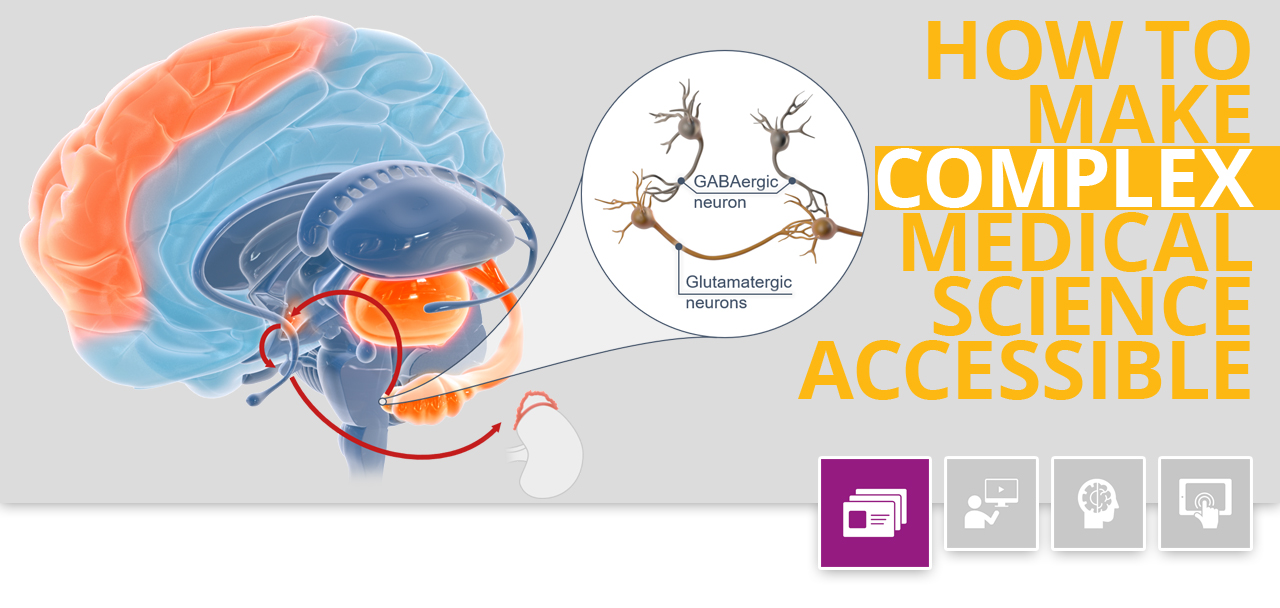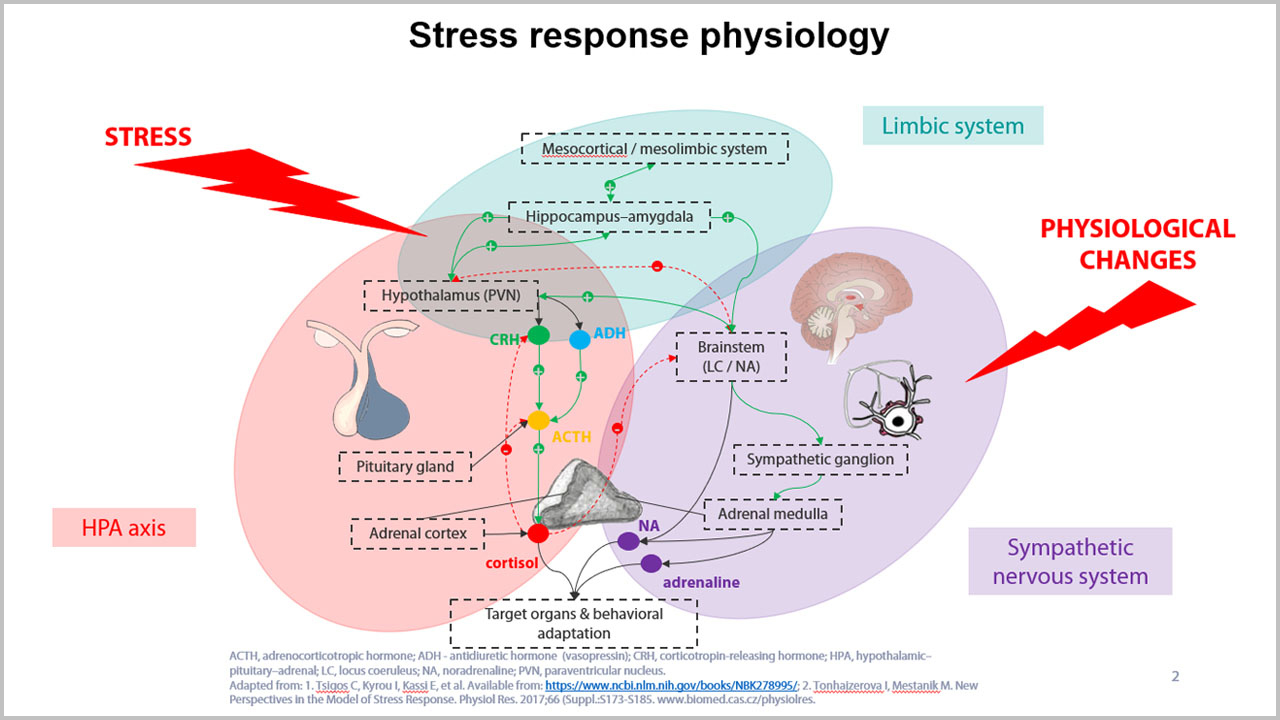Stress response physiology
Let’s start together
Stress-response physiology is a challenging topic that benefits from review and further study: there are three systems that mediate the stress reaction, which run more or less parallel and influence each other in various ways. The existing presentation does use visual elements, but it is still difficult for the viewer to immediately grasp the processes being explained.
Input material provided
Why? The viewer lacks a clear entry point into the slide: if you do not know where to begin, you have more trouble understanding the content. The slide also has too much information, especially text insertions that are not absolutely necessary for the target group at this stage of knowledge transfer.
So what can be done?
First, the slide is given a clear visual entry point in the form of a sophisticated 3D image of the human brain. The most important processes fade in step by step, so that the audience can follow them without information overload. Information unnecessary for the knowledge transfer to the target group is omitted or simplified. The sequential structure of the presentation allows the presenter or target group to determine the speed of knowledge transfer.


